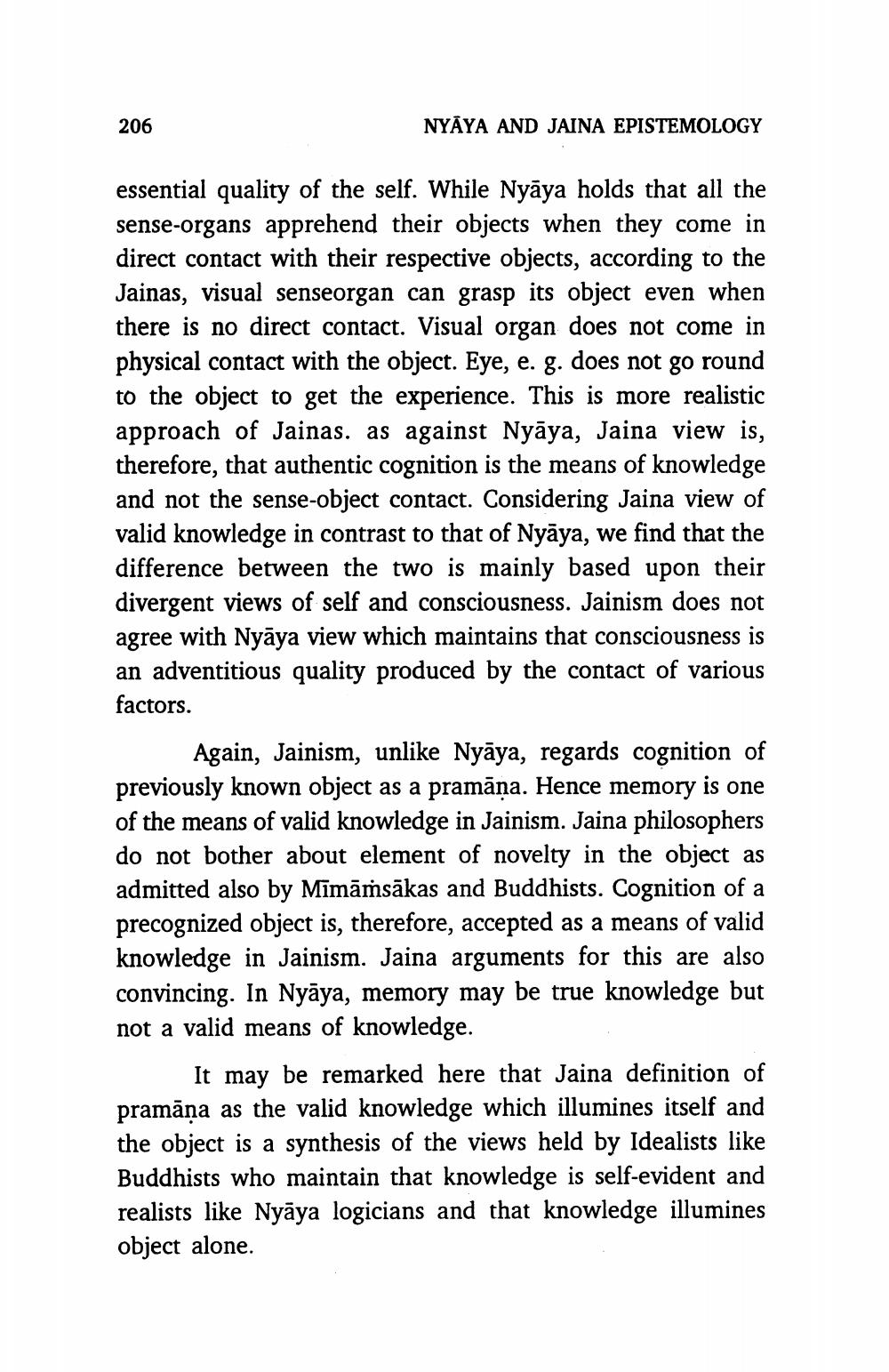________________
206
NYAYA AND JAINA EPISTEMOLOGY
essential quality of the self. While Nyāya holds that all the sense-organs apprehend their objects when they come in direct contact with their respective objects, according to the Jainas, visual senseorgan can grasp its object even when there is no direct contact. Visual organ does not come in physical contact with the object. Eye, e. g. does not go round to the object to get the experience. This is more realistic approach of Jainas. as against Nyāya, Jaina view is, therefore, that authentic cognition is the means of knowledge and not the sense-object contact. Considering Jaina view of valid knowledge in contrast to that of Nyāya, we find that the difference between the two is mainly based upon their divergent views of self and consciousness. Jainism does not agree with Nyāya view which maintains that consciousness is an adventitious quality produced by the contact of various factors.
Again, Jainism, unlike Nyāya, regards cognition of previously known object as a pramāna. Hence memory is one of the means of valid knowledge in Jainism. Jaina philosophers do not bother about element of novelty in the object as admitted also by Mimāṁsākas and Buddhists. Cognition of a precognized object is, therefore, accepted as a means of valid knowledge in Jainism. Jaina arguments for this are also convincing. In Nyāya, memory may be true knowledge but not a valid means of knowledge.
It may be remarked here that Jaina definition of pramāņa as the valid knowledge which illumines itself and the object is a synthesis of the views held by Idealists like Buddhists who maintain that knowledge is self-evident and realists like Nyāya logicians and that knowledge illumines object alone.




